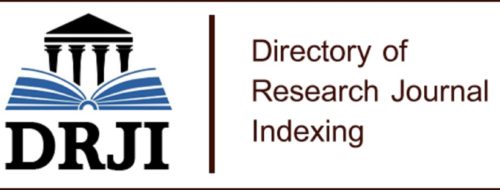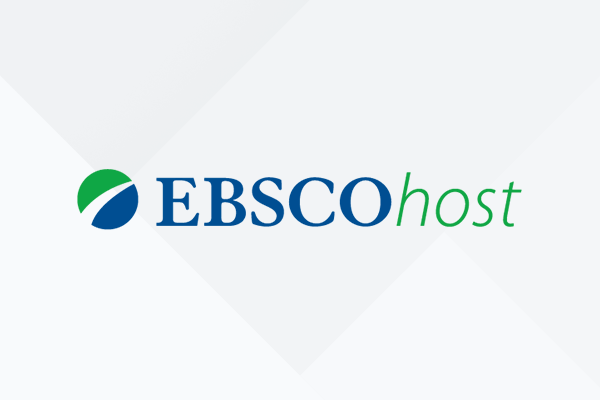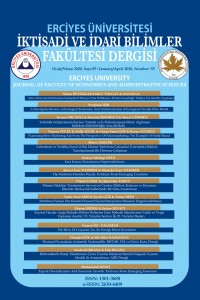The Effect of Competency Development on Career Satisfaction and Job Performance: Mediatıon Role of Self-Perceived Employment
Öz
Today, competency development, career satisfaction, job performance and perceived employability concepts are among the important concepts in organizational behavior literature. Knowing these concepts and the relationships between these concepts guides managers and employees at all levels of the business in matters related to how organizational and individual development should be. It is important to examine the relationship between these concepts and as a result of the review in the literature, it was found that no study was conducted to investigate the mediation effect in the relations between these concepts. The aim of this study is to investigate the effect of competence development on career satisfaction and job performance, and whether the perceived employability of individuals evaluated as mediators in this relationship may be mediated. Data were collected from 178 lecturers and civil servants working in 9 universities, 6 of which were state and 3 were foundations. In this study, sampling and questionnaire methods were used. R programming language were used for the analysis of the data collected at the end of the questionnaire. The validity and reliability of the scales were tested by factor analysis and reliability test. The hypotheses were examined by correlation and regression analysis and Sobel tests and the findings obtained at the end of the study were interpreted. At the end of the study, it has been found that competency development is important in increasing job performance, but it is not effective in increasing career satisfaction. In addition, it was concluded that self-perceived employability had no mediation role in the relationship between competency development and career satisfaction, and that there was a partial mediation role in the relationship between competence development and job performance.
Anahtar Kelimeler
Competency Development Career Satisfaction Job Performance Self-Perceived Employability
Kaynakça
- Abele, A. E. ve Spurk, D. (2009). The Longitudinal Impact of Self-efficacy and Career Goals on Objective and Subjective Career Success, Journal of Vocational Behavior, 74, 53–62.
- August, L. ve Waltman, J. (2004). Culture, Climate, and Contribution: Career Satisfaction among Female Faculty, Research on Higher Education. 45(2), 177- 192.
- Baron, R. M., & Kenny, D. A. (1986). The moderator-mediator variable distinction in social psychological research – conceptual, strategic, and statistical considerations. Journal of Personality and Social Psychology, 51 (6), 1173-1182.
- Bingöl, D. (2003). İnsan Kaynakları Yönetimi, 5.b., Beta, İstanbul.
- Borman, W. C. ve Motowidlo, S. J. (1993). Expanding the Criterion Domain to Include Elements of Contextual Performance, içinde N. Schmitt ve W. Borman (eds), Personnel Selection in Organizations, Jossey-Bass, New York, 71-98.
- Boyatzis, R. (1982), The Competent Manager: A Model for Effective Performance, Wiley, New York.
- Boyatzis, R. (2007). Competencies in the 21st century. Journal of Management Development, 27(1), 5-12.
- Budak, G. (2008). Yetkinliğe Dayalı İnsan Kaynakları Yönetimi, Barış Yayınları, İzmir.
- Burke, R. J., ve McKeen, C. A. (1994). Training and Development Activities and Career Success of Managerial and Professional Women, Journal of Management Development, 13(5), 53-63.
- Ceylan, A. ve Ulutürk, Y. H. (2006). Rol Belirsizliği, Rol Çatışması, İş Tatmini ve Performans Arasındaki İlişkiler. Doğuş Üniversitesi Dergisi, 7(1), 48-58.
- DeCenzo, D. A., Robbins, S. P. ve Verhulst, S. L. (2017). İnsan Kaynakları Yönetiminin Temelleri, Çev. Ed.: Canan Çetin ve M. Lütfi Arslan, Nobel, Ankara.
- de Cuyper, N., Sulea, C., Philippaers, K., Fischmann, G., Iliescu, D. ve de Witte, .H. (2014). Perceived Employability and performance: Moderation by Felt Job Insecurity, PersonnelReview, 43(4), 536-552.
- de Vos, A., Dewettinck, K., ve Buyens, D. (2009). The Professional career on the Right Track. A Study on the Interaction between Career Self-management and Organizational Career Management in Explaining Employee Outcomes, European Journal of Work and Organizational Psychology, 18(1), 55-80.
- de Vos, A., de Hauw, S., van der Heijden, B.I.J.M. (2011). Competency development and career success: The mediating role of employability, Journal of Vocational Behavior, 79, 438-447.
- Dobson, R. vd. (2007). Factors associated with career satisfaction among general practitioners in canada, can j. rural med, Vol.12, No.4, pp. 217-230.
- Evans, J.D. (1996). Straightforward Statistics for the Behavioral Sciences, Pacific Grove, CA: Brooks/Cole Publishing.
- Eygü, H. ve Güllüce, A.Ç. (2017). Determination of Customer Satisfaction in Conservative Concept Hotels by Ordinal Logistic Regression Analysis, Journal of Financial Risk Management, 6, 269-284.
- Forrier, A. ve Sels, L. (2003). The Concept Employability: A Complex Mosaic, Human Resources Development and Management, 3, 102-124.
- Fugate, M., Kinicki, A. J., & Ashforth, B. E. (2004). Employability: A psycho-social construct, its dimensions, and applications. Journal of Vocational Behavior, 65, 14–38.
- Fugate, M., & Kinicki, A. J. (2008). A Dispositional Approach to Employability: Development of a Measure and Test of Implications for Employee Reactions to Organizational Change. Journal of Occupational & Organizational Psychology, 81(3), 503-527.
- Gerçek, M., Atay, S. E. ve Dündar, G. (2015). Çalışanların İş-yaşam Dengesi ile Kariyer Tatmininin, İşten Ayrılma Niyetine Etkisi, KAÜ İİBF Dergisi, 6 (11), 67-86.
- Gerçek, M. ve Elmas Atay S. (2017). Rothwell ve Arnold’ın Algılanan İstihdam Edilebilirlik Ölçeği’nin Türkçe’ye Uyarlama Geçerlilik ve Güvenirlik Çalışması, Dumlupınar Üniversitesi Sosyal Bilimler Dergisi, 54, 91-103.
- Greenhaus, J. H., Parasuraman, S. ve Wormley, W. M. (1990). Race Effects of Organizational Experience, Job Performance Eveluation, and Career Outcomes, Academy of Management Journal, 33(1), 64-96.
- Gürkan, G. Ç. ve Koçoğlu, M. (2014). Yaratıcı Örgüt İkliminin Kariyer Tatmini Üzerine Etkisinde Duygusal Bağlılığın Aracı Değişken Rolü: Türkiye’de Bir Vakıf ve Bir Devlet Üniversitesinde Karşılaştırmalı Bir Araştırma, Uluslararası Sosyal Araştırmalar Dergisi, 7(29), 588-602.
- Hall, D. T. (2002). Careers in and out of organizations. Thousand Oaks: Sage Publications.
- Hallier, j. (2009). The influence of employability messages on employee mobility tactics and work group identification, The International Journal of Human Resource Management, 20(4), 846-868.
- Hillage, J., Pollard, E. (1998). Employability. Developing a Framework for Policy Analysis, DFEE Research Briefing No: 85, Sussex, Institute for Employment Studies.
- Hofmans, J., Dries, N., ve Pepermans, R. (2008). The Career Satisfaction Scale: Response bias among Men and Women, Journal of Vocational Behavior, 73, 397–403.
- Karahan, A. ve Kav, S. (2018). Hemşirelikte Mesleki Yetkinlik, Hacettepe Üniversitesi Hemşirelik Fakültesi Dergisi, 5(2), 160-168.
- Kaymaz, K. (2009). Performans Değerleme ve Çalışan Verimliliği: Performansta Geribildirim, Dora, Bursa.
- Lepnurm, R., Dobson, R. ve Keegan, D. (2007). Factors Associated with Career Satisfaction among General Practitioners in Canada, Canadian Journal of Rural Medicine, 12(4), 217-230.
- McClelland O.C. (1973). Testing for Competence Rather Than for Intelligence, American Psychologist, 28, 1-14.
- Meydan H.C. ve Şeşen H, (2011). Yapısal Eşitlik Modellemesi AMOS Uygulamaları. Detay Yayıncılık, Ankara.
- Meyer, K. E. ve Peng, M. W. (2006). Probing Theoretically into Central and Eastern Europe Transaction, Resources, and Institutions, Journal of International Business Studies, 36 (6), 600-621.
- Motowidlo, S. J., Barman, W. C. ve Schmit, M. J. (1997). A Theory of Individual Differences in Task and Contextual Performance, Human Performance, 10, 71-83.
- Nauta, A., Van Vianen, A. E. M., Van der Heijden, B. I. J. M., Van Dam, K. ve Willemsen, M. (2009). Understanding the Factors that Promote Employability Orientation: The Impact of Employability Culture, Career Satisfaction and Role Breadth Self-Efficacy, Journal of Occupational and Organizational Psychology, 82, 233-251.
- Ng, T. W. H., Eby, L. T., Sorensen, K. L. ve Feldman, D. C. (2005). Predictors of Objective and Subjective Career Success: A Meta-analysis, Personnel Psychology, 58(2), 367-408.
- Peluchette, J. (1993). Subjective Career Success: The Influence of Individual Difference, Family and Organizational Variables, Journal of Vocational Behavior, 43(2), 198-208.
- Poon, J. M. L. (2004). Career Commitment and Career Success: Moderating Role of Emotion Perception, Career Development International, 9(4), 374-390.
- Rageb, M. A., Abd-El-Salam, E. M., El-Samadıcy, A. ve Farıd, S. (2013). Organizational Commitment, Job Satisfaction and Job Performance as a Mediator between Role Stressors and Turnover Intentions a Study from an Egyptian Cultural Perspective, The Business & Management Review, 3(2), 51-73.
- Rivera, M.del C. A., Gallego, L. V., Alvarez, M. A., Inchaurtieta, A. M., Albizuri, I.E ve de Eulate,C. Y. A. (2012). Perceived Employability and Competence Development, Procedia-Social and Behavioral Sciences, 69, 1191-1197.
- Rothwell, A. ve Arnold, J. (2007). Self-perceived Employability: Development and Validation of a Scale, Personnel Review, 36(1), 23–41.
- Rothwell, A., Herbert, I., ve Rothwell, F. (2008). Self Perceived Employability: Construction and Initial Validation of a Scale for University Students, Journal of Vocational Behavior, 73(1), 1–12.
- Rothwell, A., Jewell, S. ve Hardie, M. (2009). Self-perceived Employability: Investigating the Responses of Post-graduate Students, Journal of Vocational Behavior, 75, 152-161.
- Sandberg, J. R. (2000). Understanding Human Competence at Work: An Interpretative Approach, Academy of Management Journal, 43(1), 9-25.
- Schneider, B., Brief, A. P., ve Guzzo, R. A. (1996). Creating a Climate and Culture for Sustainable Organizational Change, Organizational Dynamics, 24(4), 6-19.
- Shu, X., Gong, Y. Y., Xiong, J., ve Hu, X. (2018). Job Satisfaction, Turnover Intention and Work Performance in Chinese Family Enterprises, Management International, 22(2), 84-95.
- Spurk, D., Abele, A.E. ve Volmer, J. (2011), The Career Satisfaction Scale: Longitudinal Measurement Invariance and Latent Growth Analysis, Journal of Occupational and Organizational Psychology, 84, s. 315–326.
- Sobel, M. E. (1982). Asymptotic confidence intervals for indirect effects in structural equation models. Sociological Methodology, 13, 290-312.
- Tekingündüz, S, Top, M. ve Seçkin, M. (2015). İş Tatmini, Performans, İş Stresi ve İşten Ayrılma Niyeti Arasındaki İlişkilerin İncelenmesi: Hastane Örneği, Verimlilik Dergisi, 0(4), 39-64.
- Yüksel, İ. (2005). İş-aile Çatışmasının Kariyer Tatmini, İş Tatmini ve İş Davranışları ile İlişkisi, İktisadi ve İdari Bilimler Dergisi, 19 (2), 301-314.
- Williams, K. D. ve Karau, S. J. (1991). Social Loafing and Social Compensation: The Effects of Expectations of Co-worker Performance, Journal of Personality and Social Psychology, 61, 570-581.
- Van der Heijde, C. M., & Van der Heijden, B. I. J. M. (2006). A competence-based and multidimensional operationalization and measurement of employability Human Resource Management, 45(3), 449-476
- Zafar,J. ve Mat, N. B. (2012). Protean Career Attitude, Competency Development & Career Success: A Mediating Effect of Perceived Employability, International Journal of Academic Research in Business and Social Sciences, 2(4), 204-223.
- Zarifian, P. (1999), Objectif Compe´tence, Liaisons, Paris.
Yetkinlik Geliştirmenin Kariyer Tatmini ve İş Performansına Etkisi: Algılanan İstihdam Edilebilirliğin Aracılık Rolü
Öz
Günümüzde yetkinlik geliştirme, kariyer tatmini, iş performansı ile algılanan istihdam edilebilirlik kavramları, örgütsel davranış literatüründe önemli kavramlar arasındadır. Söz konusu kavramlar ve bu kavramlar arasındaki ilişkilerin bilinmesi, işletmelerde her kademedeki yöneticilere ve çalışanlara hem örgütsel hem de bireysel gelişimin nasıl olması gerektiği ile ilgili konularda yol gösterir. Bu kavramlar arasındaki ilişkilerin incelenmesi önem arz etmektedir ve literatürde yapılan inceleme neticesinde, söz konusu kavramlar arasındaki ilişkilerde aracılık etkisinin incelendiği herhangi bir çalışmanın yapılmadığı tespit edilmiştir. Bu kapsamda yapılan çalışmanın amacı, yetkinlik geliştirmenin kariyer tatmini ve iş performansına etkisini ve bu ilişkide aracılık rolünün olabileceği değerlendirilen bireylerin algılanan istihdam edilebilirliğin aracılık etkisinin olup olmadığını araştırmaktır. Bu çalışmada kolayda örneklem ve anket yöntemleri kullanılmıştır. Veriler, 6 adedi devlet ve 3 adedi vakıf olmak üzere toplam 9 üniversitede çalışan 178 öğretim görevlisi ve memurdan toplanmıştır. Anket sonucunda toplanan verilerin analizinde R programlama dili kullanılmıştır. Ölçeklerin geçerlilik ve güvenilirliği faktör analizi ve güvenirlik testi ile test edilmiştir. Kurulan hipotezler korelasyon ve regresyon analizleri ve Sobel testleri ile incelenmiş ve çalışmanın sonunda elde edilen bulgular yorumlanmıştır. Yapılan çalışmanın sonunda, yetkinlik geliştirmenin iş performansının artmasında önemli olduğu, ancak kariyer tatminin artmasında ise etkili olmadığı tespit edilmiştir. Ayrıca, algılanan istihdam edilebilirliğin yetkinlik geliştirme ile kariyer tatmini arasındaki ilişkide aracılık rolünün olmadığı ve yetkinlik geliştirme ile iş performansı arasındaki ilişkide ise kısmi aracılık rolünün olduğu sonucuna ulaşılmıştır.
Anahtar Kelimeler
Yetkinlik Geliştirme Kariyer Tatmini İş Performansı Algılanan İstihdam Edilebilirlik
Kaynakça
- Abele, A. E. ve Spurk, D. (2009). The Longitudinal Impact of Self-efficacy and Career Goals on Objective and Subjective Career Success, Journal of Vocational Behavior, 74, 53–62.
- August, L. ve Waltman, J. (2004). Culture, Climate, and Contribution: Career Satisfaction among Female Faculty, Research on Higher Education. 45(2), 177- 192.
- Baron, R. M., & Kenny, D. A. (1986). The moderator-mediator variable distinction in social psychological research – conceptual, strategic, and statistical considerations. Journal of Personality and Social Psychology, 51 (6), 1173-1182.
- Bingöl, D. (2003). İnsan Kaynakları Yönetimi, 5.b., Beta, İstanbul.
- Borman, W. C. ve Motowidlo, S. J. (1993). Expanding the Criterion Domain to Include Elements of Contextual Performance, içinde N. Schmitt ve W. Borman (eds), Personnel Selection in Organizations, Jossey-Bass, New York, 71-98.
- Boyatzis, R. (1982), The Competent Manager: A Model for Effective Performance, Wiley, New York.
- Boyatzis, R. (2007). Competencies in the 21st century. Journal of Management Development, 27(1), 5-12.
- Budak, G. (2008). Yetkinliğe Dayalı İnsan Kaynakları Yönetimi, Barış Yayınları, İzmir.
- Burke, R. J., ve McKeen, C. A. (1994). Training and Development Activities and Career Success of Managerial and Professional Women, Journal of Management Development, 13(5), 53-63.
- Ceylan, A. ve Ulutürk, Y. H. (2006). Rol Belirsizliği, Rol Çatışması, İş Tatmini ve Performans Arasındaki İlişkiler. Doğuş Üniversitesi Dergisi, 7(1), 48-58.
- DeCenzo, D. A., Robbins, S. P. ve Verhulst, S. L. (2017). İnsan Kaynakları Yönetiminin Temelleri, Çev. Ed.: Canan Çetin ve M. Lütfi Arslan, Nobel, Ankara.
- de Cuyper, N., Sulea, C., Philippaers, K., Fischmann, G., Iliescu, D. ve de Witte, .H. (2014). Perceived Employability and performance: Moderation by Felt Job Insecurity, PersonnelReview, 43(4), 536-552.
- de Vos, A., Dewettinck, K., ve Buyens, D. (2009). The Professional career on the Right Track. A Study on the Interaction between Career Self-management and Organizational Career Management in Explaining Employee Outcomes, European Journal of Work and Organizational Psychology, 18(1), 55-80.
- de Vos, A., de Hauw, S., van der Heijden, B.I.J.M. (2011). Competency development and career success: The mediating role of employability, Journal of Vocational Behavior, 79, 438-447.
- Dobson, R. vd. (2007). Factors associated with career satisfaction among general practitioners in canada, can j. rural med, Vol.12, No.4, pp. 217-230.
- Evans, J.D. (1996). Straightforward Statistics for the Behavioral Sciences, Pacific Grove, CA: Brooks/Cole Publishing.
- Eygü, H. ve Güllüce, A.Ç. (2017). Determination of Customer Satisfaction in Conservative Concept Hotels by Ordinal Logistic Regression Analysis, Journal of Financial Risk Management, 6, 269-284.
- Forrier, A. ve Sels, L. (2003). The Concept Employability: A Complex Mosaic, Human Resources Development and Management, 3, 102-124.
- Fugate, M., Kinicki, A. J., & Ashforth, B. E. (2004). Employability: A psycho-social construct, its dimensions, and applications. Journal of Vocational Behavior, 65, 14–38.
- Fugate, M., & Kinicki, A. J. (2008). A Dispositional Approach to Employability: Development of a Measure and Test of Implications for Employee Reactions to Organizational Change. Journal of Occupational & Organizational Psychology, 81(3), 503-527.
- Gerçek, M., Atay, S. E. ve Dündar, G. (2015). Çalışanların İş-yaşam Dengesi ile Kariyer Tatmininin, İşten Ayrılma Niyetine Etkisi, KAÜ İİBF Dergisi, 6 (11), 67-86.
- Gerçek, M. ve Elmas Atay S. (2017). Rothwell ve Arnold’ın Algılanan İstihdam Edilebilirlik Ölçeği’nin Türkçe’ye Uyarlama Geçerlilik ve Güvenirlik Çalışması, Dumlupınar Üniversitesi Sosyal Bilimler Dergisi, 54, 91-103.
- Greenhaus, J. H., Parasuraman, S. ve Wormley, W. M. (1990). Race Effects of Organizational Experience, Job Performance Eveluation, and Career Outcomes, Academy of Management Journal, 33(1), 64-96.
- Gürkan, G. Ç. ve Koçoğlu, M. (2014). Yaratıcı Örgüt İkliminin Kariyer Tatmini Üzerine Etkisinde Duygusal Bağlılığın Aracı Değişken Rolü: Türkiye’de Bir Vakıf ve Bir Devlet Üniversitesinde Karşılaştırmalı Bir Araştırma, Uluslararası Sosyal Araştırmalar Dergisi, 7(29), 588-602.
- Hall, D. T. (2002). Careers in and out of organizations. Thousand Oaks: Sage Publications.
- Hallier, j. (2009). The influence of employability messages on employee mobility tactics and work group identification, The International Journal of Human Resource Management, 20(4), 846-868.
- Hillage, J., Pollard, E. (1998). Employability. Developing a Framework for Policy Analysis, DFEE Research Briefing No: 85, Sussex, Institute for Employment Studies.
- Hofmans, J., Dries, N., ve Pepermans, R. (2008). The Career Satisfaction Scale: Response bias among Men and Women, Journal of Vocational Behavior, 73, 397–403.
- Karahan, A. ve Kav, S. (2018). Hemşirelikte Mesleki Yetkinlik, Hacettepe Üniversitesi Hemşirelik Fakültesi Dergisi, 5(2), 160-168.
- Kaymaz, K. (2009). Performans Değerleme ve Çalışan Verimliliği: Performansta Geribildirim, Dora, Bursa.
- Lepnurm, R., Dobson, R. ve Keegan, D. (2007). Factors Associated with Career Satisfaction among General Practitioners in Canada, Canadian Journal of Rural Medicine, 12(4), 217-230.
- McClelland O.C. (1973). Testing for Competence Rather Than for Intelligence, American Psychologist, 28, 1-14.
- Meydan H.C. ve Şeşen H, (2011). Yapısal Eşitlik Modellemesi AMOS Uygulamaları. Detay Yayıncılık, Ankara.
- Meyer, K. E. ve Peng, M. W. (2006). Probing Theoretically into Central and Eastern Europe Transaction, Resources, and Institutions, Journal of International Business Studies, 36 (6), 600-621.
- Motowidlo, S. J., Barman, W. C. ve Schmit, M. J. (1997). A Theory of Individual Differences in Task and Contextual Performance, Human Performance, 10, 71-83.
- Nauta, A., Van Vianen, A. E. M., Van der Heijden, B. I. J. M., Van Dam, K. ve Willemsen, M. (2009). Understanding the Factors that Promote Employability Orientation: The Impact of Employability Culture, Career Satisfaction and Role Breadth Self-Efficacy, Journal of Occupational and Organizational Psychology, 82, 233-251.
- Ng, T. W. H., Eby, L. T., Sorensen, K. L. ve Feldman, D. C. (2005). Predictors of Objective and Subjective Career Success: A Meta-analysis, Personnel Psychology, 58(2), 367-408.
- Peluchette, J. (1993). Subjective Career Success: The Influence of Individual Difference, Family and Organizational Variables, Journal of Vocational Behavior, 43(2), 198-208.
- Poon, J. M. L. (2004). Career Commitment and Career Success: Moderating Role of Emotion Perception, Career Development International, 9(4), 374-390.
- Rageb, M. A., Abd-El-Salam, E. M., El-Samadıcy, A. ve Farıd, S. (2013). Organizational Commitment, Job Satisfaction and Job Performance as a Mediator between Role Stressors and Turnover Intentions a Study from an Egyptian Cultural Perspective, The Business & Management Review, 3(2), 51-73.
- Rivera, M.del C. A., Gallego, L. V., Alvarez, M. A., Inchaurtieta, A. M., Albizuri, I.E ve de Eulate,C. Y. A. (2012). Perceived Employability and Competence Development, Procedia-Social and Behavioral Sciences, 69, 1191-1197.
- Rothwell, A. ve Arnold, J. (2007). Self-perceived Employability: Development and Validation of a Scale, Personnel Review, 36(1), 23–41.
- Rothwell, A., Herbert, I., ve Rothwell, F. (2008). Self Perceived Employability: Construction and Initial Validation of a Scale for University Students, Journal of Vocational Behavior, 73(1), 1–12.
- Rothwell, A., Jewell, S. ve Hardie, M. (2009). Self-perceived Employability: Investigating the Responses of Post-graduate Students, Journal of Vocational Behavior, 75, 152-161.
- Sandberg, J. R. (2000). Understanding Human Competence at Work: An Interpretative Approach, Academy of Management Journal, 43(1), 9-25.
- Schneider, B., Brief, A. P., ve Guzzo, R. A. (1996). Creating a Climate and Culture for Sustainable Organizational Change, Organizational Dynamics, 24(4), 6-19.
- Shu, X., Gong, Y. Y., Xiong, J., ve Hu, X. (2018). Job Satisfaction, Turnover Intention and Work Performance in Chinese Family Enterprises, Management International, 22(2), 84-95.
- Spurk, D., Abele, A.E. ve Volmer, J. (2011), The Career Satisfaction Scale: Longitudinal Measurement Invariance and Latent Growth Analysis, Journal of Occupational and Organizational Psychology, 84, s. 315–326.
- Sobel, M. E. (1982). Asymptotic confidence intervals for indirect effects in structural equation models. Sociological Methodology, 13, 290-312.
- Tekingündüz, S, Top, M. ve Seçkin, M. (2015). İş Tatmini, Performans, İş Stresi ve İşten Ayrılma Niyeti Arasındaki İlişkilerin İncelenmesi: Hastane Örneği, Verimlilik Dergisi, 0(4), 39-64.
- Yüksel, İ. (2005). İş-aile Çatışmasının Kariyer Tatmini, İş Tatmini ve İş Davranışları ile İlişkisi, İktisadi ve İdari Bilimler Dergisi, 19 (2), 301-314.
- Williams, K. D. ve Karau, S. J. (1991). Social Loafing and Social Compensation: The Effects of Expectations of Co-worker Performance, Journal of Personality and Social Psychology, 61, 570-581.
- Van der Heijde, C. M., & Van der Heijden, B. I. J. M. (2006). A competence-based and multidimensional operationalization and measurement of employability Human Resource Management, 45(3), 449-476
- Zafar,J. ve Mat, N. B. (2012). Protean Career Attitude, Competency Development & Career Success: A Mediating Effect of Perceived Employability, International Journal of Academic Research in Business and Social Sciences, 2(4), 204-223.
- Zarifian, P. (1999), Objectif Compe´tence, Liaisons, Paris.
Ayrıntılar
| Birincil Dil | Türkçe |
|---|---|
| Bölüm | Makaleler |
| Yazarlar | |
| Yayımlanma Tarihi | 27 Nisan 2020 |
| Kabul Tarihi | 15 Aralık 2019 |
| Yayımlandığı Sayı | Yıl 2020 Sayı: 55 |
Cited By
Kariyer Planlama ve Kariyer Memnuniyeti İlişkisi: Sivil Havacılık Sektörü Yer Hizmetleri Çalışanları Üzerine Bir Araştırma
ODÜ Sosyal Bilimler Araştırmaları Dergisi (ODÜSOBİAD)
https://doi.org/10.48146/odusobiad.1174485
Örgüt Temelli Özsaygı ile Algılanan İstihdam Edilebilirlik Arasındaki İlişkide Cinsiyetin Düzenleyici Etkisi ve Bir Uygulama
OPUS Uluslararası Toplum Araştırmaları Dergisi
Kenan ORÇANLI
https://doi.org/10.26466/opus.706649













ERÜ İktisadi ve İdari Bilimler Fakültesi Dergisi 2021 | iibfdergi@erciyes.edu.tr
Bu eser Creative Commons Atıf-Gayri Ticari-Türetilemez 4.0 Uluslararası Lisansı ile lisanslanmıştır.



